|



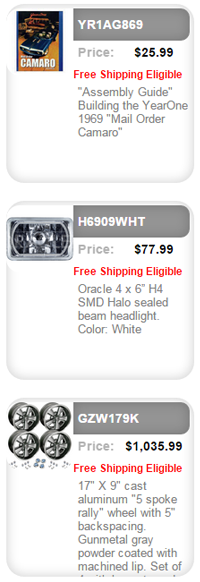
|
 |
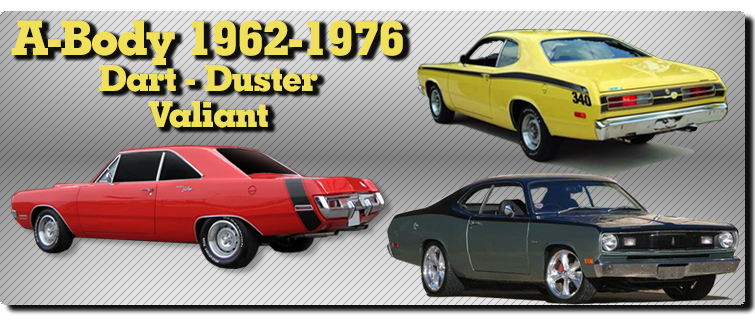 |
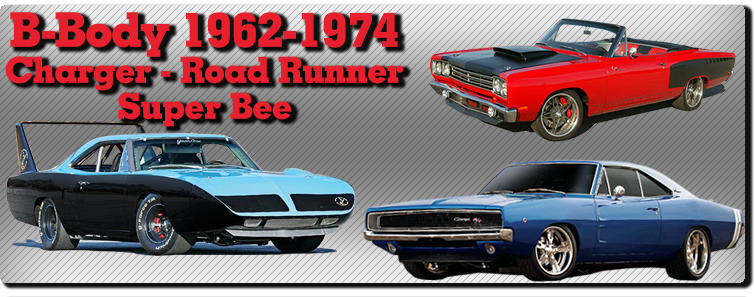 |
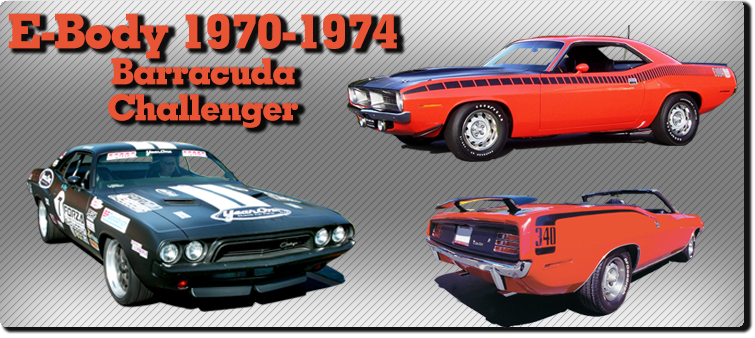 |
When it Comes to Mopar Muscle – It’s All About the Alphabet
Road Runner, Charger, Dart, Challenger and ‘Cuda – these names and many more are legends in the American muscle car world. With good reason: Mopar in the ‘60s and ‘70s contributed more to the Super Car movement than arguably any other manufacturer. The sheer number of performance models produced through the Dodge, Plymouth, and Chrysler divisions was phenomenal, and of course is one of the main reasons that Mopars have proven to have such an enduring legacy over the years. 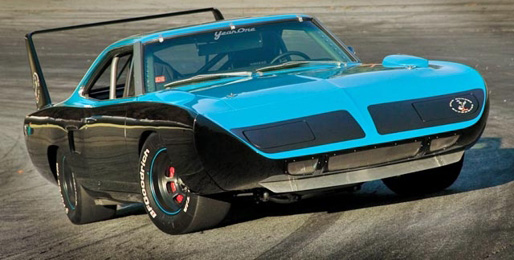
Popular they may be, but certainly with so many different models it can get a bit confusing trying to determine which nameplate belongs to which platform family, and therefore shares a number of parts and accessories. Not to worry – we’re here to help. The first step in learning about Mopar muscle is as simple as learning your ABEs.
A-Body
The A-body line of compact cars actually debuted in 1960, just before the muscle car madness began in earnest. The Valiant and Lancer got things rolling in ’60 with slant-6 power, but it was the introduction of the first 273 cubic-inch V8 into the A-body in 1964 that caused performance fans to take notice of the cars. The transfer of the Dart name from the B-platform and the introduction of the Plymouth Barracuda nameplate, along with a high-compression, 4-bbl version of the 273 really got A-body performance headed in the right direction.
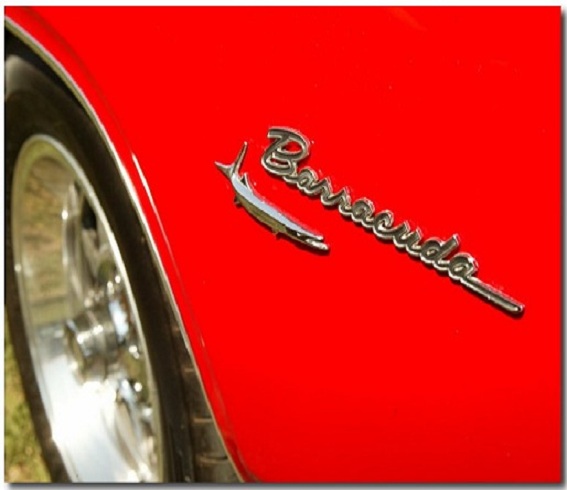 The next big change came in 1967 when the venerable 383-inch big-block V8 became available in the A-body line, thanks in no small part to famous Mopar performance dealer “Mr. Norm” building a prototype and showing it off to the factory boys in Detroit. Before the ’67 model year was out, the 383 was a factory-offered option.
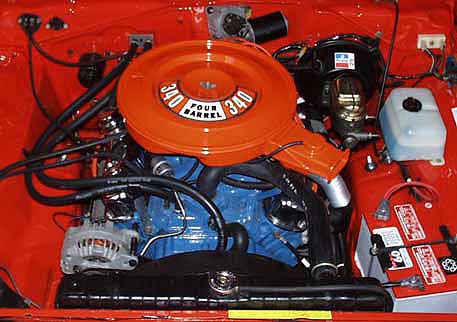 In 1968, things really took off. First, the famous 340-inch LA small block was introduced. The 340 was designed from the outset as a performance engine, and when installed in the lightweight Darts and Barracudas was an exception performer capable of humbling many big-block cars of the era. Also in ’68, the Dart GTS package appeared for the first time adding some nice muscle car style to the performance offered by the 383 engine. The big bomb for ’68, though, was the limited run of 426 Hemi-powered Darts and Barracudas built specifically for the drag strip. Complete books can and have been written about these very special cars, so here we’ll just say these cars represent the pinnacle of Mopar A-body performance and collectability!
More big changes to the A-body line happened in 1970. The introduction of the E-body pony cars (Barracuda and Challenger) stole some of the A-body’s thunder along with their big block engines. Since the Barracuda name went E-body in ’70, Plymouth introduced the Duster to the world. 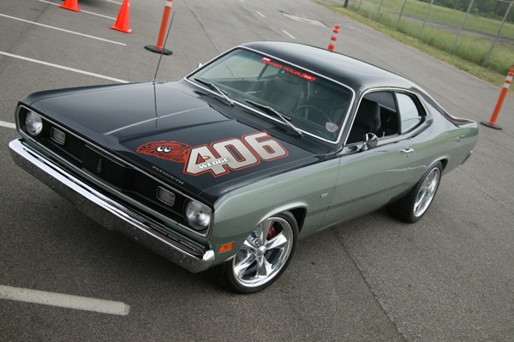 The 340 versions of the Dart (and Swinger) and Duster (and Demon in ’71) carried the performance flag for the A-body line. The 340s remained available through 1973 when they were replaced by the less performance-minded 360. Performance dropped through the end of production in 1975 primarily due to the rise in emissions regulations and the oil crisis.
B-Body
The mid-size B-body was Mother Mopar’s main player in the muscle car arena. The highly versatile platform debuted in 1962 with the Dart (which became an A-body in subsequent years), Polara, Savoy, Belvedere and Fury (later a C-body). Lots of models and lots of options were the hallmarks of the B-body run. 1965 saw the Satellite name hit the market as the highest trim level Belvedere offering from Plymouth, and the revival of the Coronet name for Dodge. Engine options for the early B-bodys ranged from the standard 273-inch V8 up the 426 Wedge, and included virtually every V8 offered by Mopar at the time.
A special run of Coronets and 440s known as the A990 cars were built in 1965 for use in sanctioned drag racing. Just over 100 A990 cars were built, and featured among other exotica the 426-inch Hemi engine. While these were fantastic performance cars, they were not intended for street use and really weren’t available to the average car buyer.
From a street performance standpoint, things really took off in 1966. The muscle car wars were red hot by this time, with all the Detroit manufacturers building serious engines and installing them in intermediate chassis. Two big things happened in the B-body world for ’66. The first was the introduction of the Dodge Charger – a car that would become a Mopar icon in the coming years. The other big new was the availability of the Street Hemi – a 425-horse production version of the limited-availability 426 Race Hemi of ’64-65. The Hemi was available across the Dodge and Plymouth B-body line in ’66, supposedly even making it onto a few 4-door versions.
In 1967 the Coronet R/T was born, as was the GTX on the Plymouth side. These cars were the top B-body performance options from Mopar, with both sporting standard 440-inch, 375-horse big blocks. Of course, for a few extra bucks, Mopar would gladly install a 426 Hemi in either car for you.
The B-body platform got a redesign in 1968, with sleek new sheetmetal and yet more performance choices. During the course of the muscle car’s development in the marketplace prices and number of options had steadily risen the last few years. Plymouth decided to offer a version a low-price performance package on the Belvedere line that included a standard 383-inch engine, but didn’t include a host of other options unless the buyer specified them. They also named this value-priced muscle car after the popular Road Runner cartoon character. The Road Runner package proved to be very popular, and would become an icon in the muscle car world. The Road Runner was so well-received, Dodge got into the low-price muscle game a bit later with their Super Bee package on the Coronet. The Super Bee had the same philosophy as the Road Runner – standard big-block power, cool name and a low price of entry.
Along with the other B-bodies, the Charger got new sheetmetal in 1968 that set the standard for combining fantastic style with great performance. Many consider the 1968-70 Chargers to be the high-water mark for Mopar muscle car design.In fact, all the 1968-70 B-bodies have proven to be the most popular intermediates wearing a Pentastar logo. The Super Car era in Detroit was in full swing, and each of the Big Three were trying to outdo one another with special models, colors, drivetrains and anything else they could think of to grab market share.
Factory involvement in sanctioned racing was seen as a great way to show off performance engineering – the old Win on Sunday, Sell on Monday philosophy was in high gear. Mopar released a number of special models intended for use on the racetrack, or to homologate special equipment for use by race teams. The most famous of these has to be the 1969 Charger Daytona and 1970 Superbird wing cars. The designs were optimized for use on the high-banked superspeedways such as Daytona and Talladega, and featured sleek noses, flush rear windows and high-mounted rear wings to cheat the wind. The cars were so successful on track that ultimately the sanctioning bodies legislated them out of existence through ever-tightening rules.
1971 saw yet another redesign for the B-body. For ’71, many of the drivetrain options remained from the earlier generation, but the overall shape of the car was sleeker and the interiors were more refined. As the B-body progressed through the end of this generation, we saw the big blocks and Hemis get dropped due to increasing emissions regulations, insurance costs and rising fuel prices. Of course, these things killed off the muscle cars from every manufacturer with very few exceptions. There’s no doubt, though, that the venerable B-body Mopar was a major player during the era.
E-Body
The Mopar E-body series had a brief but brilliant stay on the landscape. The classic E-body series was built from 1970-74, and was Mopar’s entry into the very hot pony car market segment. Pony cars were typically 2-door coupes and convertibles that were a bit smaller and more sporty than the traditional intermediate platforms. The Dodge Challenger and Plymouth Barracuda were slightly larger than the Mopar A-bodies and slightly smaller than the B-bodies, and offered the same basic powertrain choices as the B-body series. In fact, much of the 1971-later B-bodies share some chassis components with the E-bodies.
Although the Challenger and ‘Cuda weren’t around long, they certainly made their mark on the muscle car world. Engine options for 1970 ranged from frugal 318s to hot rod 340s (with three 2-bbl carburetion on the T/A Challenger and AAR Cuda versions) and included the 383, 440 and 426 Hemi big blocks. Body styles were 2-door coupe and convertible, with combinations like the ’70 and ’71 Hemi convertibles being among the most rare and collectible muscle cars on the planet. Inside, the E-bodies featured bucket seats, cool gauges and consoles, all the stuff the serious performance enthusiast could want.
After 1972 the E-body fell victim to the same pressures that ended other muscle car runs. The emissions/insurance/fuel crisis triumvirate meant the end of the big-block cars, and even the over-achieving 340 went by the wayside. Even though the 1973-74 models didn’t have the performance of the earlier cars, they still had the inherent Challenger/Barracuda good looks and remained a popular choice among buyers.
|




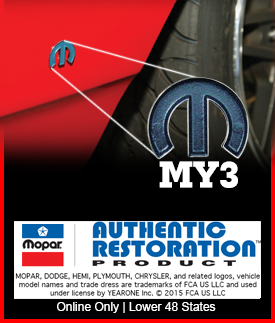
|
|
|
|
|
|
|
|